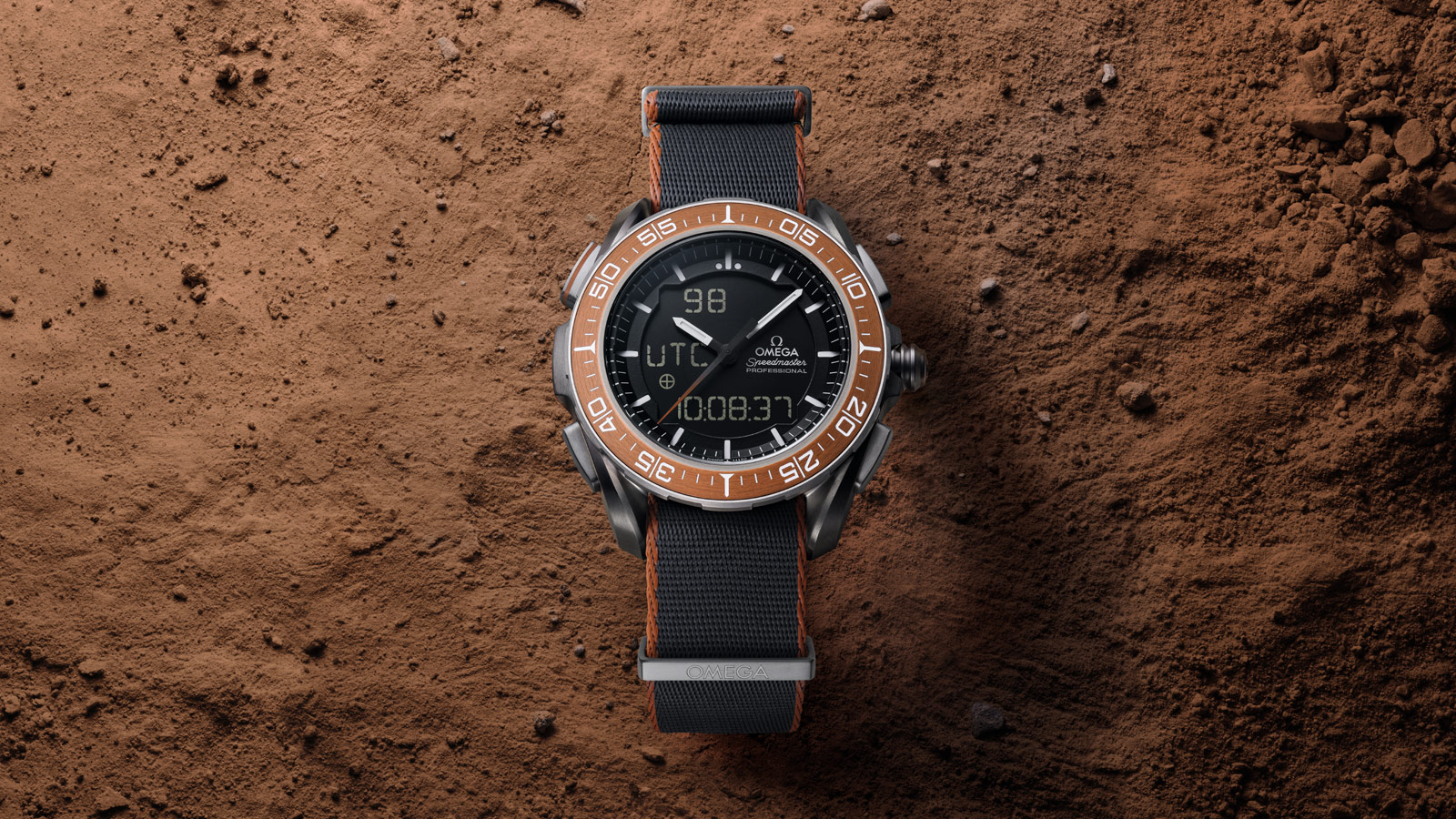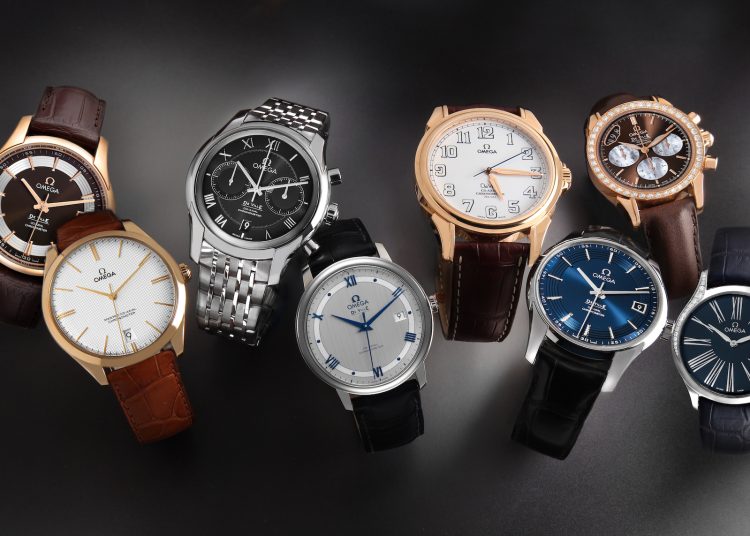Omega Watches
Omega, a name synonymous with Swiss watchmaking excellence, has built a rich and enduring legacy that spans over 170 years. Founded in 1848, the brand has stood at the forefront of horological innovation, pushing boundaries with every new timepiece, while remaining rooted in a tradition of craftsmanship and precision. Omega’s contributions to the world of luxury watches go far beyond technical expertise; the brand has woven itself into the fabric of global culture through its involvement in space exploration, sports, film, and fashion.
In this comprehensive article, we will explore the origins of Omega, the milestones that shaped its development, and the brand’s enduring influence on the watch industry. From the birth of its iconic Speedmaster to the historical significance of the Seamaster, we will unravel the fascinating story behind Omega’s journey as one of the most influential and beloved luxury watch brands in the world.
I. The Birth of Omega: Foundations of Swiss Watchmaking Excellence
1. The Beginning of Omega: A Legacy of Craftsmanship
Omega was founded in 1848 by Louis Brandt in the Swiss town of La Chaux-de-Fonds, a region renowned for its watchmaking heritage. Initially, Louis Brandt operated his business as a small workshop, where he assembled pocket watches from parts sourced from local suppliers. His commitment to precision and reliability quickly gained recognition, and by 1850, Brandt began exporting his timepieces to other European countries, which marked the first steps towards Omega’s global success.
However, it was not until 1894 that the Omega brand, as we know it today, came into being. In that year, Louis Brandt’s sons, Louis-Paul and César, introduced the Omega 19-line movement, a revolutionary design that became the foundation of the brand’s future success. This movement was one of the first mass-produced chronometers, and its accuracy set a new standard in the watchmaking industry. The introduction of the Omega 19-line marked the beginning of the company’s dedication to precision and innovation, values that would define the brand for generations to come.
2. Establishing the Omega Name
In 1894, the company adopted the name “Omega” as part of its new branding. The name, meaning “the last letter of the Greek alphabet,” symbolized the completion of the brand’s journey towards perfection. The Omega name was also a reflection of the company’s commitment to leading the watch industry. In the years that followed, Omega expanded its reach internationally, gaining a reputation for producing highly accurate, reliable, and stylish timepieces.
II. Omega’s Growth and Milestones: Innovation at Every Turn
Omega’s journey into the 20th century was marked by groundbreaking achievements in both technology and design. Throughout this period, Omega constantly pushed the boundaries of what was possible in horology, leading to a series of innovations that would define the brand and elevate it to the top of the watchmaking industry.
1. Omega’s Role in Chronometry and Timekeeping Competitions
By the turn of the 20th century, Omega was already a recognized leader in precision timekeeping. The company won numerous awards at international chronometry competitions, further cementing its reputation for producing some of the most accurate timepieces in the world. Omega watches were often the choice of choice for observatories, scientific institutions, and even the military.
In 1931, Omega’s Marine Chronometer was awarded the Grand Prix at the Geneva Observatory competition, further establishing its credentials in precision timekeeping. Omega’s ability to deliver consistently accurate chronometers would be crucial in shaping its reputation in the years to come.
2. The Omega Speedmaster: A Legacy in Space
One of Omega’s most iconic contributions to the world of horology came in 1957 with the launch of the Omega Speedmaster. Initially designed as a chronograph for motorsport enthusiasts, the Speedmaster soon became much more than a racing tool. Its precision and durability led to its selection by NASA in 1965 as the official watch for astronauts on space missions.
The Omega Speedmaster Professional, affectionately known as the “Moonwatch”, would go on to be worn by astronauts during the Apollo 11 mission in 1969, when Neil Armstrong became the first person to walk on the moon. The Speedmaster’s role in space exploration solidified its place as one of the most significant and recognizable watches in history.
The Speedmaster remains a cultural icon, celebrated for its enduring legacy, technological prowess, and connection to one of humanity’s greatest achievements.
3. The Omega Seamaster: Timepieces for the Deep
In 1948, Omega launched the Seamaster collection, designed as a line of diving and water-resistant watches. The Seamaster quickly gained a reputation for its robustness and reliability in extreme conditions, making it a favorite among divers, sailors, and adventurers.
In 1995, the Seamaster achieved even greater cultural prominence when it became the watch of choice for James Bond in the film GoldenEye. The partnership with the 007 franchise added a touch of sophistication and adventure to the Seamaster’s already impressive legacy, elevating the brand’s status as a symbol of both elegance and durability.
4. The Omega Constellation: Luxury and Precision
The Omega Constellation collection, first introduced in 1952, represents the brand’s commitment to combining luxury with precision. The Constellation is known for its refined aesthetics, including the signature star motif on the caseback, and its remarkable accuracy. The collection is particularly popular among collectors who appreciate the balance between fine craftsmanship and timeless design.
The Constellation has undergone several transformations over the decades, but it remains one of Omega’s most prestigious lines, epitomizing the brand’s philosophy of blending cutting-edge technology with classic beauty.

III. Omega’s Technological Innovation: Mastering the Art of Watchmaking
From the very beginning, Omega has been a pioneer in watchmaking technology. The brand has continuously pushed the boundaries of what is possible in horology, introducing innovations that have not only revolutionized the industry but have also set new standards for precision, durability, and style.
1. The Co-Axial Escapement
One of Omega’s most significant innovations was the development of the Co-Axial escapement, invented by the legendary horologist George Daniels. Introduced in 1999, the Co-Axial escapement was a breakthrough in mechanical watchmaking. The new system reduces friction between the moving parts inside the movement, resulting in greater accuracy and longer service intervals.
The Co-Axial escapement became a hallmark of Omega’s mechanical watches, and it continues to be featured in many of the brand’s most iconic models. Its introduction revolutionized mechanical watchmaking and demonstrated Omega’s commitment to technical excellence and innovation.
2. Master Chronometer Certification
In 2015, Omega launched its Master Chronometer certification, a new standard for precision and anti-magnetic performance. Omega partnered with the Swiss Federal Institute of Metrology (METAS) to create a rigorous testing process that ensures each Master Chronometer watch meets the highest standards of performance. Omega’s Co-Axial Master Chronometer movements are capable of resisting magnetic fields up to 15,000 gauss, a significant improvement over traditional mechanical movements.
This certification has further enhanced Omega’s reputation for producing reliable, durable, and precise timepieces, solidifying the brand’s position as a leader in both traditional horology and technological innovation.
IV. Omega Watches and Their Cultural Impact: A Global Legacy
Beyond the technical innovations and cutting-edge designs, Omega has become a cultural icon. The brand has achieved immense popularity in various fields, including space exploration, sports, entertainment, and luxury fashion. Omega’s watches have been worn by athletes, celebrities, and historical figures, further cementing the brand’s status as one of the world’s most prestigious watchmakers.
1. Space Exploration: Omega’s Journey Beyond Earth
Omega’s involvement in space exploration is perhaps its most significant cultural contribution. The Speedmaster was selected by NASA in 1965 as the official timepiece for astronauts, and it has since accompanied astronauts on every Apollo mission, including the historic Apollo 11 moon landing. The Speedmaster’s role in space exploration has become a key element of the brand’s identity and continues to influence the cultural perception of Omega as a brand dedicated to exploration and innovation.
2. Omega and the 007 Franchise
Omega’s collaboration with the James Bond franchise further expanded its cultural influence. Since GoldenEye (1995), the Omega Seamaster has been James Bond’s watch of choice, adding an aura of sophistication, adventure, and elegance to the character’s already legendary persona. The association with 007 has made the Seamaster one of the most recognizable and sought-after luxury watches worldwide.
3. Omega in the World of Sports
Omega has been
a major presence in the world of sports, serving as the official timekeeper for many of the world’s most prestigious events. Omega has been the official timekeeper for the Olympic Games since 1932, ensuring the brand’s deep connection to the world of athletics and precision timing. Omega also plays a significant role in professional yachting and golf, further reinforcing its status as a brand associated with performance and excellence.
V. Omega’s Future: Innovation, Sustainability, and Timeless Appeal
As Omega looks to the future, the brand remains committed to innovation, sustainability, and maintaining the timeless appeal that has defined it for more than a century and a half. With the ongoing development of new technologies, the continued growth of its iconic collections, and a focus on sustainable practices, Omega is poised to remain a leader in the world of horology.
1. The Future of Omega Watches: A Commitment to Innovation
Omega continues to push the boundaries of horological technology with advancements like the Omega Master Chronometer and ongoing developments in materials science. The brand’s focus on anti-magnetic technology and precision timekeeping ensures that Omega will remain at the cutting edge of luxury watchmaking for years to come.
2. Sustainability in Omega’s Watchmaking
Omega is committed to sustainability in its manufacturing processes. The brand is increasingly using innovative materials such as ceramic, titanium, and recycled metals in its timepieces, contributing to the protection of the environment while maintaining its high standards of luxury and precision.
Conclusion: Omega’s Timeless Legacy
Omega’s rich history is defined by innovation, precision, and timeless elegance. From its beginnings in 1848 to its cutting-edge advancements in horology, Omega has continually set new standards for quality and craftsmanship. With an enduring legacy in space exploration, sports, and popular culture, Omega has solidified its position as one of the most revered names in luxury watches. As the brand looks to the future, its commitment to excellence ensures that Omega will continue to inspire and captivate generations of watch enthusiasts around the world.





































